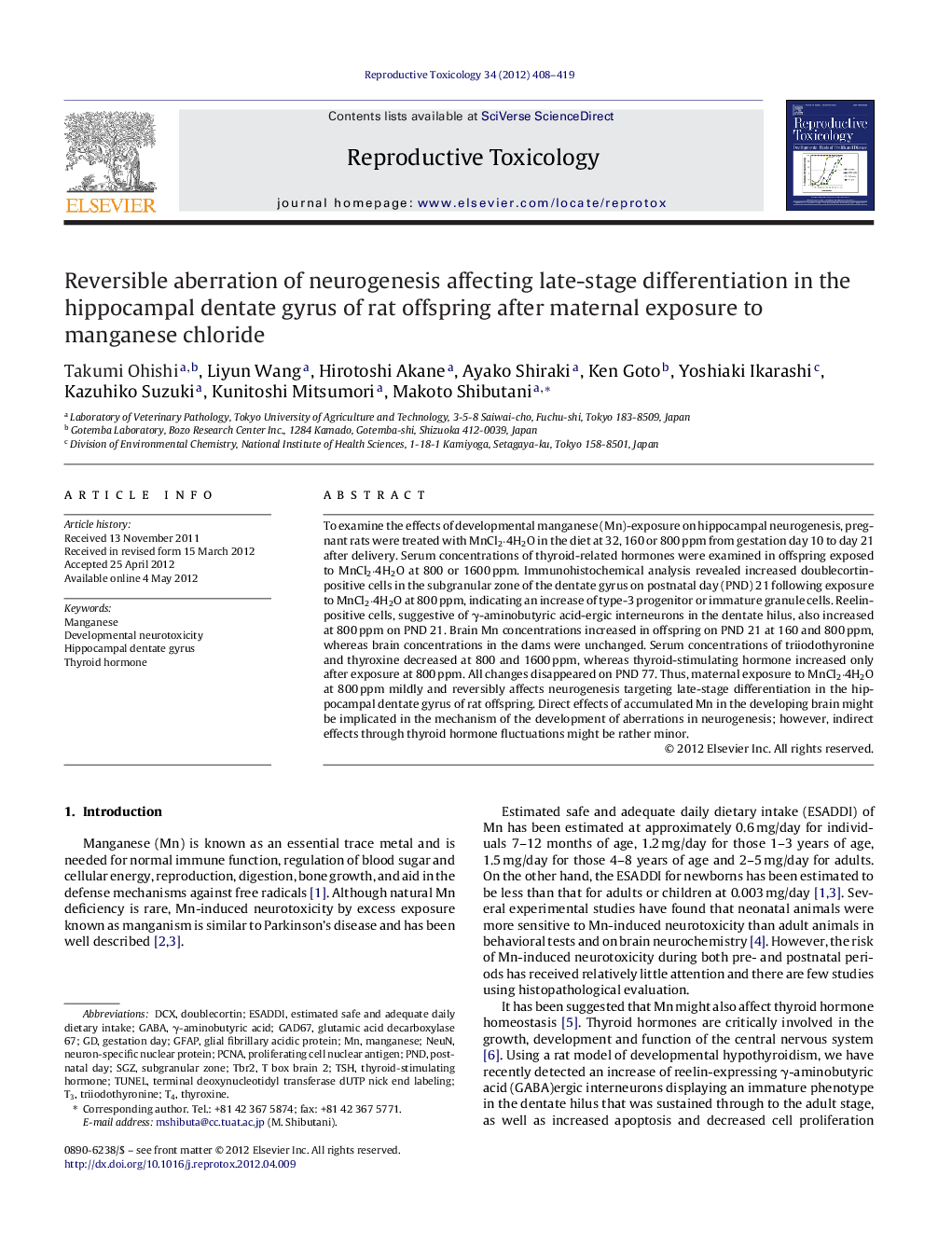| Article ID | Journal | Published Year | Pages | File Type |
|---|---|---|---|---|
| 2593828 | Reproductive Toxicology | 2012 | 12 Pages |
To examine the effects of developmental manganese (Mn)-exposure on hippocampal neurogenesis, pregnant rats were treated with MnCl2·4H2O in the diet at 32, 160 or 800 ppm from gestation day 10 to day 21 after delivery. Serum concentrations of thyroid-related hormones were examined in offspring exposed to MnCl2·4H2O at 800 or 1600 ppm. Immunohistochemical analysis revealed increased doublecortin-positive cells in the subgranular zone of the dentate gyrus on postnatal day (PND) 21 following exposure to MnCl2·4H2O at 800 ppm, indicating an increase of type-3 progenitor or immature granule cells. Reelin-positive cells, suggestive of γ-aminobutyric acid-ergic interneurons in the dentate hilus, also increased at 800 ppm on PND 21. Brain Mn concentrations increased in offspring on PND 21 at 160 and 800 ppm, whereas brain concentrations in the dams were unchanged. Serum concentrations of triiodothyronine and thyroxine decreased at 800 and 1600 ppm, whereas thyroid-stimulating hormone increased only after exposure at 800 ppm. All changes disappeared on PND 77. Thus, maternal exposure to MnCl2·4H2O at 800 ppm mildly and reversibly affects neurogenesis targeting late-stage differentiation in the hippocampal dentate gyrus of rat offspring. Direct effects of accumulated Mn in the developing brain might be implicated in the mechanism of the development of aberrations in neurogenesis; however, indirect effects through thyroid hormone fluctuations might be rather minor.
► MnCl2·4H2O transiently increased doublecortin-positive progenitor granule cells at 800 ppm. ► MnCl2·4H2O transiently increased reelin-producing interneurons at 800 ppm. ► Brain Mn concentrations increased on PND 21 at 160 and 800 ppm. ► Changes in serum concentrations of thyroid-related hormones were rather weak.
